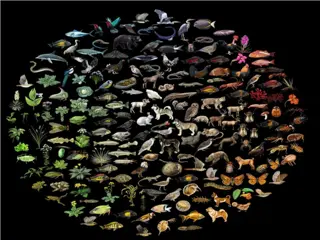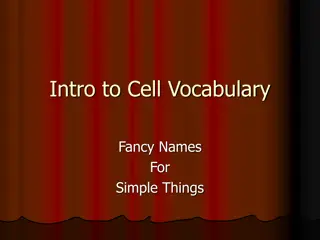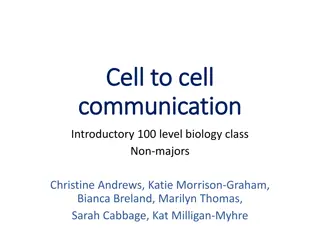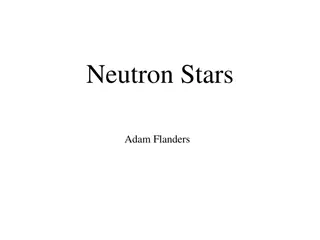The Fascinating Journey of Cell Theory and Discoveries
Delve into the historical milestones of cell theory discovery, from Robert Hooke's observations of cork cells to Louis Pasteur's refutation of Spontaneous Generation. Explore the contributions of key figures like Matthias Schleiden, Theodor Schwann, and Rudolf Virchow in shaping our understanding of cells as the fundamental units of life.
Download Presentation

Please find below an Image/Link to download the presentation.
The content on the website is provided AS IS for your information and personal use only. It may not be sold, licensed, or shared on other websites without obtaining consent from the author. Download presentation by click this link. If you encounter any issues during the download, it is possible that the publisher has removed the file from their server.
E N D
Presentation Transcript
Some Random Cell Facts The average human being is composed of around 100 Trillion individual cells!!! It would take as many as 50 cells to cover the area of a dot on the letter i WOW!!!
Discovery of Cells 1665- English Scientist, Robert Hooke, discovered cells while looking at a thin slice of cork. He described the cells as tiny boxes or a honeycomb He thought that cells only existed in plants and fungi
Anton van Leuwenhoek 1673- Used a handmade microscope to observe pond scum & discovered single-celled organisms He called them animalcules He also observed blood cells from fish, birds, frogs, dogs, and humans Therefore, it was known that cells are found in animals as well as plants
150-200 Year Gap??? Between the Hooke/Leuwenhoek discoveries and the mid 19thcentury, very little cell advancements were made. This is probably due to the widely accepted, traditional belief in Spontaneous Generation. Examples: -Mice from dirty clothes/corn husks -Maggots from rotting meat
19thCentury Advancement Much doubt existed around Spontaneous Generation Conclusively disproved by Louis Pasteur Pasteur: Ummm, I don t think so!!! ? = +
Development of Cell Theory 1838- German Botanist, Matthias Schleiden, concluded that all plant parts are made of cells 1839- German physiologist, Theodor Schwann, who was a close friend of Schleiden, stated that all animal tissues are composed of cells.
Development of Cell Theory 1858- Rudolf Virchow, German physician, after extensive study of cellular pathology, concluded that cells must arise from preexisting cells.
The Cell Theory Complete The 3 Basic Components of the Cell Theory were now complete: 1. All organisms are composed of one or more cells. (Schleiden & Schwann)(1838-39) 2. The cell is the basic unit of life in all living things. (Schleiden & Schwann)(1838-39) 3. All cells are produced by the division of preexisting cells. (Virchow)(1858)
Modern Cell Theory Modern Cell Theory contains 4 statements, in addition to the original Cell Theory: The cell contains hereditary information(DNA) which is passed on from cell to cell during cell division. All cells are basically the same in chemical composition and metabolic activities. All basic chemical & physiological functions are carried out inside the cells.(movement, digestion,etc) Cell activity depends on the activities of sub-cellular structures within the cell(organelles, nucleus, plasma membrane)
How Has The Cell Theory Been Used? The basic discovered truths about cells, listed in the Cell Theory, are the basis for things such as: Disease/Health/Medical Research and Cures(AIDS, Cancer, Vaccines, Cloning, Stem Cell Research, etc.)
Some Parting Thoughts It is amazing to think that the cells that make up our bodies are just as alive as we are. Humans are just an intricately designed community of cells, which must work together to survive
This powerpoint was kindly donated to www.worldofteaching.com http://www.worldofteaching.com is home to over a thousand powerpoints submitted by teachers. This is a completely free site and requires no registration. Please visit and I hope it will help in your teaching.

























